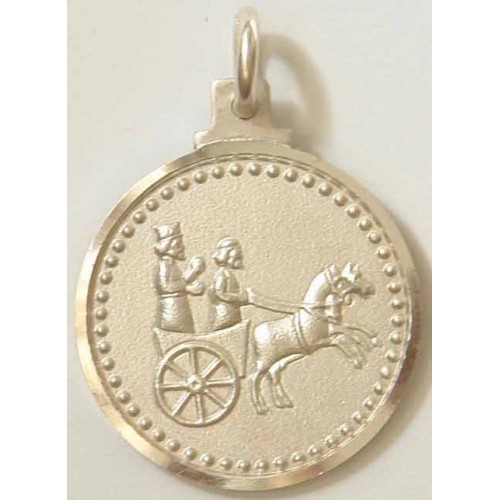- On sale!





Iran Persia Sterling Silver 925 with Achaemenian Empire Takht-e Jamshid Persepolis figure of showing a Persian followed by a Mede soldier in traditional custume on Chariot Necklace Pendant
---
Diameter: 27 mm
---
Weight: 8.0 grams
Chariots were being used throughout the Achaemenid period in a number of different roles. Foreign contingents still maintained their use, however Persian's military use was now limited to that of a command vehicle, with a number of exceptions.
Although the chariot was not longer the main offensive arm it was still seen as a symbol of authority and power. Generals would still use them in cultural and military parades, for hunting and to transport themselves to battle.
No only is Xerxes recorded as being carried in a chariot during his invasion of Greece but he also took with him the sacred chariot of Ahura-Madza. The golden solar chariot that was dedicated to the one great god. It was pulled by eight white horses with the charioteer walking behind holding the reins as no mortal was allowed to ride in it.
In Xerxes invasion of Greece, both the Indian and Libyan contingents were said to have brought a chariot force.
Probably the most specialised chariot use was that of the scythed chariot which Xenophon described as used by Cyrus the Great.